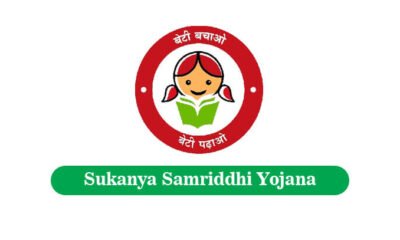Loan
Types of Education Loans: Financing Your Future

Education can never be cheap, but the ever-increasing cost of higher education simply scaring people away. Fortunately, multiple types of education loans can help such students and families cope with these rising expenses. This paper discusses the varieties of education loans, their features, and considerations that will definitely help you make a very informed decision on how to finance your education.
- Federal Student Loans
Federal student loans are provided by the U.S. Department of Education and are usually the first choice for many students in terms of most-favorable terms and protections.
- Direct Subsidized Loans
These are awarded to undergraduates with an expected family contribution that shows financial need. Interest is paid by the government while a student is enrolled in school, grace periods, and deferment periods.
b) Direct Unsubsidized Loans
Available to undergraduate and graduate students, regardless of financial need. Interest is charged from the date of disbursement, and the student is responsible for all interest payments.
c) Direct PLUS Loans
These loans are available for graduate students as well as for parents of dependent undergraduate students. They have higher interest rates and require them to pass a credit check.
d) Direct Consolidation Loans
These allow many federal student loans to be combined into one loan with a fixed rate of interest.
- Private Student Loans
These are available through banks, credit unions, and other such entities. They can be effectively utilized to augment federal loans when more money needs to be borrowed.
- School-channel Private Student Loans
These loans are certified by the school and are largely disbursed directly to the institution.
b) Direct-to-Consumer Private Student Loans
These loans are not certified by the school, and are paid directly to the borrower.
c) Co-signed Private Student Loans
Most private lenders are contingent upon a co-signer, usually a parent or guardian, for the approval of a loan.
- State-based Student Loans
Some states offer student loan programs either to residents of that state or to students studying in in-state institutions. The rates and other conditions of these loans may be competitive compared to the private loans.
- Institutional Loans
Some colleges and graduate schools have their own loan programs that students can use to help fund educational expenses. These loans often have far better terms than private loans but are usually restricted in amount.
- International Student Loans
These loans are only available for international students studying in the United States or U.S. students studying abroad. They nearly always require a co-signer who is a citizen or permanent resident of the U.S.
- Career-specific Loans
Some careers have special loan programs, including some of the following:
- Medical School Loans
Designed for the medical student with perhaps higher limits and time allowed for payback.
- Law School Loans
Although similar in nature to the medical school loans, these are targeted towards law students and their particular financing needs.
- MBA Loans
These would be for those who are entering business school and be competitively priced and have some flexible terms of repayment.
- Income Share Agreements (ISAs)
Not traditional loans, ISAs are an up-and-coming alternative by which students agree to pay a percentage of their future income for a set period in return for money to finance their education.
Important Factors in Choosing Your Education Loan
- Interest Rates
Check fixed and variable interest rates. Federal loans offer generally lower fixed rates compared to private loans.
- Repayment Terms
Notice the period for repayment and the plans available to repay it. Federal loans mostly have more lenient options, including income-driven repayment plans.
- Borrower Protections
Federal loans offer protections such as deferment, forbearance, and loan forgiveness that may not be offered by private loans.
- Requirements for Eligibility
Federal loans have the same eligibility criteria, whereas most private loans rely on good credit scores or a co-borrower.
- Loan Limits
Know the annual and aggregate borrowing limits for specific loan types.
- Fees
Note the origination fees, prepayment penalty fees, and the methods of payment.
- Co-signer Requirements
Know if a co-signer is required, and be informed about the responsibilities taken by the borrower and the co-signer.
- Credit Impact
Be aware how obtaining the loan and then repayment will impact your credit score.
Methods of Responsible Borrowing
1. Use all free aid first, such as scholarships and grants.
2. Only borrow money for educational expenses.
3. Understand the conditions of your loan before signing.
4. Consider your future earning potential to decide the amount to borrow.
5. Make interest payments if possible from school to lessen the overall cost of the loan.
6. Research loan forgiveness/repayment assistance that is attainable from your field.
Conclusion
Understanding the available options of education loans can get quite overwhelming, but their knowledge is very important in making sound decisions regarding the funding of your education. Federal student loans are usually the most advantageous and should be considered first. After maximizing these, private loans, state-based programs, and other specialized options can help in filling remaining gaps.
Keep in mind that loans to education do open the doors toward higher education, but they are among the largest financial obligations one can take. Be cautious in your choices, borrow wisely, and plan your repayment. Only then can you make an investment in your future while staying financially healthy in the long run.
-

 Credit Card1 year ago
Credit Card1 year agoHow to Foreclose ICICI Credit Card EMI
-

 Government Schemes1 year ago
Government Schemes1 year agoGovernment Schemes for Girl Child
-

 Saving Schemes1 year ago
Saving Schemes1 year agoHow to Open a Sukanya Samriddhi Account Online: A Step-by-Step Guide
-
Credit Card1 year ago
How to Check ICICI Credit Card Balance
-

 Credit Card1 year ago
Credit Card1 year agoHow to Change Address in ICICI Credit Card
-

 Saving Schemes1 year ago
Saving Schemes1 year agoSukanya Samriddhi Yojana Eligibility
-

 Credit Card1 year ago
Credit Card1 year agoHow to Unblock Credit Card ICICI
-

 Income tax1 year ago
Income tax1 year agoIncome Tax Audit Limit
